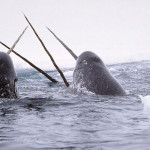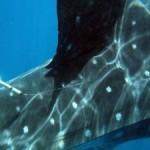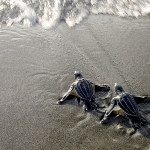
American space and satellite technologies provide valuable services to our global society and important contributions to global environmental monitoring. In a way, the whole world depends upon the United States global observing system of geopositional and environmental satellites to monitor storm systems, FEDEX packages, vessel traffic, and ice cover. Few people appreciate these services, but they are enabled by our democracy, specifically by the Freedom of Information Act, which stipulates that any taxpayer funded enterprise must be made publicly available upon request. NOAA and NASA take this mandate very seriously. I know because I work with satellite data. Data access is not a right that colleagues in many other countries enjoy; they rely on US based satellite data and distribution networks.
The Goddard Memorial Dinner celebrates our achievements in space by granting awards and scholarships for unique and outstanding accomplishments. At the 51st Annual Goddard Memorial Dinner on March 7th, astronaut Neil Armstrong spoke eloquently about the history of rocketry, ranging from Chinese fireworks to modern multi-stage rockets. The presentation was delightful. The event was held at the Washington Hilton Hotel in Washington, DC. Nearly 2200 people attended from the black-tie function hosted by the National Space Club. Invitees included civil servants from space borne federal agencies like NASA and NOAA, the US Navy and Air Force, and aerotech companies like Boeing, Ball Aerospace, and Northrup Grumman. Seriously, it was almost enough to give you a military-industrial complex.
My wife and I were in attendance to receive an award, believe it or not. That’s why you see me up on stage there with Neil Armstrong. I’m at the far right of the picture sitting next to a gentleman receiving an award for autonomous orbital docking maneuvers at the international space station. Yep, that’s right, totally out of my league. See more pictures and read below.
Two weeks ago I received the 2008 NOAA David Johnson Award for “outstanding and innovative use of satellite data”. The award was given for my work describing the migratory behavior of blue whales and sea turtles in relation to sea surface temperature fronts in the Northeast Pacific. My colleagues and I used two satellite instruments, the ARGOS system and the Pathfinder AVHRR, to track whales and turtles and to monitor residence time under different environmental conditions. This is the first time the award has been given for oceanographic work related to endangered marine species. Previous David Johnson award winners used satellites to track hurricanes and African dust across the Atlantic Ocean to the Caribbean Sea, among other things.
One reason I am posting this is because a colleague wanted to see a picture of me in a tuxedo. Admittedly, I would wear one everyday if I could. Another reason I am writing this is because I had no opportunity to give a thank you speech at the dinner, so permit me to say here a very special thank you to the National Space Club, to NOAA, to the award committee, to Barbara Brooks and Marian Katz, and to Admiral Conrad Lautenbacher and his staff (some of whom I was delighted to meet). I also want to send warm thanks and appreciation to my advisors Drs. Tom Shirley and Wes Tunnell at Harte Research Institute for nominating me, to my colleagues Drs. Bruce Mate, Joel Ortega-Ortiz at Oregon State University, Wallace J Nichols at Ocean Conservancy, Lance Morgan at Marine Conservation Biology Institute, and to my friend David Canny, and to the good folks at Conservation International and North Pacific Marine Sciences Organization for their kind letters of support. HRI staff Gail Sutton and Dixie Smith kindly helped to deck me out in the nice tux, and to get the family there and back.
It is my sincere hope that the techniques employed in the studies will be used to improve spatial management of the oceans and to reduce impacts to whales from ship strikes and low frequency sonar by aiding in the design of a global system of pelagic (open ocean) protected areas that will help to sustain future generations of fish and people.
For the oceans! Photos below.

The view down the table. That’s the incoming President of the National Space Club smiling into the camera. Admiral Lautenbacher is four seats away in profile near the podium.

Me and my baby daughter Ana (11 mos) on stage after the 51st Annual Goddard Memorial Dinner.






Wild applause and sound of champagne corks popping
Congratulations!
Yee haw! *clap *clap *clap *clap Congratulations Peter!
It is awesome to see environmental work steadily creeping up the justification ladder for space research. I have been really impressed with the Earth Observation people I’ve met at NASA.
I’m at the far right of the picture sitting next to a gentleman receiving an award for autonomous orbital docking maneuvers at the international space station. Yep, that’s right, totally out of my league.
That guy is probably saying “I’m second to the right sitting next to a gentleman receiving an award for tracking migratory behavior of endangered species. Yep, that’s right, totally out of my league.” In other words, it takes all types to make it work.
That said, OMG, sitting at the same table as Neil Armstrong!?!? Swoon.
Congrats, Peter! Do you get a free trip on the space shuttle?
TOO cool. Great science and nice tux. Way to go!
Congrats, Peter. That is great.
Thanks, y’all. I really appreciate those kind words.
Gotta run now, though, I have a space shuttle to catch. ;)
Good work Mr. Bond